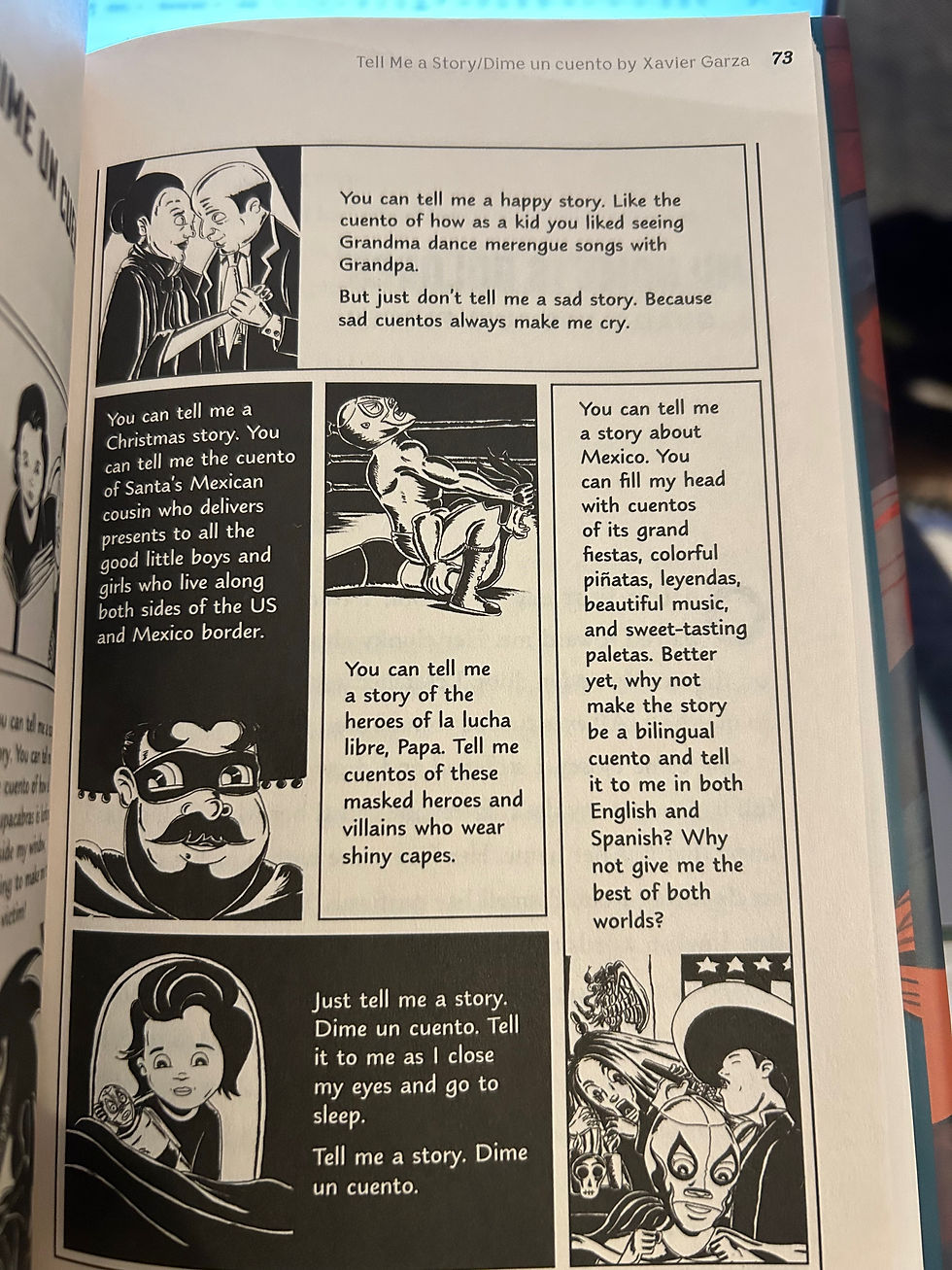Living Beyond Borders: A Vibrant Mosaic of Mexican-American Stories for Young Readers
- Paloma Aguirre
- Jan 25
- 3 min read

Living Beyond Borders: Growing Up Mexican in America, edited by Margarita Longoria, is a collection of short stories, comics, poems, and essays that together creates a colorful mosaic of Mexican-American identity. Directed at a middle-grade audience, the anthology is skillfully curated to ease young readers into the complexities of the Mexican experience in America, especially as the young protagonists of the book navigate generational trauma and racism. With each depiction of pain comes stories of self-determination, resilience, and joy. Even within short form, the characters in these stories are quickly lovable, and each piece is full of heart.
The most striking thread that pulls the anthology together is the remarkable demonstrated ability of young Mexican-Americans to derive strength from adversity. The youngsters in these stories face loneliness and bias in their struggle for self-determination in a world tainted by anti-Mexican sentiments, yet the ways in which they carve out space for themselves provide inspiring examples for middle-grade readers of any background.
More than anything, the protagonists find community with peers, elders, and ancestors as they tap into the cultural power of being Mexican in America. “Ghetto is Not An Adjective” demonstrates the infectiousness of resistance in teenagers, and the powerful impact of positive community role models. In “The Body by the Canal,” author David Bowles provides an insight into the presence of AIDS in Chicanx communities as young Oscar experiences his first queer love. “Filiberto’s Final Visit” tells the classic tale of the cooler older primo who imparts his wisdom about beer and dating, illustrating the monumental role of community elders to help young Mexicans find their dignitad. Every story offers the reader a different perspective on the young Chicanx experience.
A particular favorite of mine, “La Princesa Mileidy Dominguez” showcases how community members rally around a young houseless student to give her a quinceñera. This story begins with Mileidy’s arrival at a new school, and develops into a warm reminder of the impacts of kindness from new friends. Not only does Rubén Degollado beautifully capture the momentous occasion of a quinceñera for Latina girls, but he highlights the potential for schools to be a safe, uplifting community space. Fellow students, staff, and administrators alike go out of their way to make Mileidy feel included and loved, demonstrating the importance of these community spaces (and the people within them) in sustaining Latinx youths.
In another highlight, Anna Meriano marries magical realism and Mexican folklore in the delicious short story, “Warning Bells.” In it, spunky Daniela struggles to navigate her parent’s divorce and teenage growing pains, and is visited by Coyolxauqui, the Aztec goddess of the moon. Anna Meriano tactfully navigates mental health in middle grade fiction, openly discussing medication and self harm, while also giving attention to the ways that cultural history can be both affirming and heavy. Daniela comments, “Mom and Dad used to love taking me to all the Mexican and Chicanx pride events, and I used to like it too until I got older and couldn’t wrap my head around how it’s possible to dance with such fierce and colorful joy while shouldering a legacy of so much pain” (25). If I were to describe Living Beyond Borders in just one sentiment, it would be this one.

The poems, essays, stories, and comics in this anthology weave a rich, colorful tapestry of Chicanx life in America. From first loves to encounters with pre-Columbian deities to navigating racism in schools, workplaces, and families, there is no one narrative that defines “Growing Up Mexican in America.” It takes a village to raise Mexican-Americans who derive power and strength from their history, and Living Beyond Borders proves that artists are an integral part of this effort. All middle grade readers, but especially those living in borderlands or Chicanx communities, should (and will love) this book.




Comments